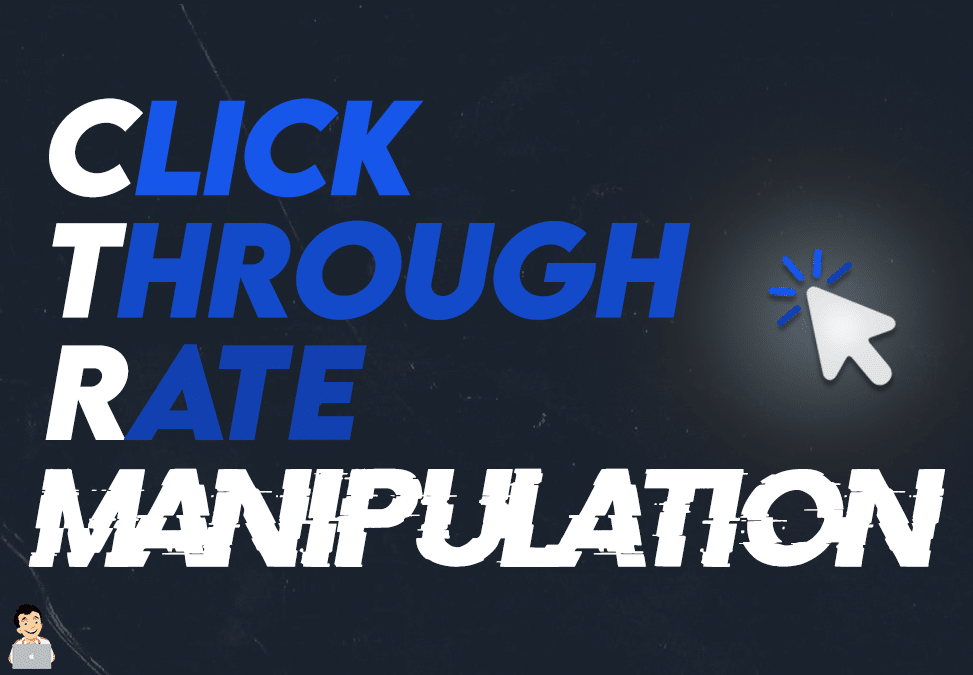Accelerate Your Search Engine Optimization Growth Via CTR Adjustment
The relevance of click-through price (CTR) in the world of search engine optimization can not be overemphasized, as it acts as an important indicator of user engagement and material effectiveness. By comprehending and manipulating CTR via strategic enhancements-- such as maximizing title tags and crafting persuasive meta summaries-- marketers can foster boosted visibility and organic growth. Nevertheless, the subtleties of individual habits and the application of data-driven strategies can commonly be complex. This discussion will discover the details of these methods, exposing insights that could change your SEO technique and potentially boost your website's efficiency.
Comprehending Click-Through Price
Click-through rate (CTR) is a crucial metric in digital advertising, representing the percentage of users who click on a certain web link compared to the overall variety of customers that see a web page, e-mail, or ad. This statistics works as a vital sign of how effectively content engages its audience. A higher CTR suggests that the content reverberates with individuals, enticing them to act, while a reduced CTR may indicate an absence of significance or passion.
Understanding CTR includes recognizing its components and the variables that influence it (CTR Manipulation). Various elements, such as engaging headings, relevant keywords, and critical call-to-action positionings, play a considerable role in boosting CTR. Additionally, the context in which the link is presented-- whether in a search engine outcome, an email project, or social networks-- can impact individual engagement degrees
Keeping an eye on CTR over time permits online marketers to assess the performance of different methods and make notified choices to optimize their projects. By evaluating patterns and fads in CTR data, organizations can refine their web content strategies, target certain audience sectors, and ultimately improve their electronic marketing performance. Thus, a detailed understanding of CTR is fundamental for driving successful marketing campaigns.
Importance of CTR in SEO
The relevance of click-through rate (CTR) prolongs past user involvement; it is also a crucial part of search engine optimization (SEARCH ENGINE OPTIMIZATION) CTR functions as an indicator of exactly how well a site's material reverberates with its target market. A higher CTR recommends that the web site is supplying relevant and engaging details, which can lead to improved natural positions.
Online search engine, especially Google, carefully monitor CTR as part of their algorithms. A page with a high CTR signals to look engines that the web content is valuable and reliable, potentially improving its setting in search outcomes. On the other hand, low CTRs may indicate that individuals do not find the content appealing, resulting in lower positions.
Additionally, CTR can affect the overall customer experience, as it shows the efficiency of meta titles and descriptions in drawing in clicks - CTR Manipulation. This connection between individual actions and online search engine efficiency highlights the value of maximizing both web content and discussion to improve CTR
Strategies for CTR Improvement
Improving click-through rates (CTR) requires a calculated approach that encompasses numerous methods targeted at enhancing visibility and allure in search results page. One efficient method is maximizing title tags and meta summaries. Crafting engaging, keyword-rich titles and summaries can draw users' focus, making them more most likely to click on your link.

In addition, consider A/B testing different headings and summaries to recognize which variants reverberate best with your audience (CTR Manipulation). This data-driven approach makes it possible for constant optimization based upon user preferences
Integrating numbers, questions, or emotional triggers in your titles can also substantially enhance CTR. For example, titles that present appealing concerns often force customers to click to discover answers.
Lastly, making certain mobile-friendliness is essential, as a raising number of customers you can find out more access the web using smart phones. A receptive layout boosts user experience, bring about higher involvement prices. By carrying out these techniques, you can successfully boost your CTR, inevitably contributing to your general search engine optimization success.
Studying User Habits
Understanding individual habits is essential for optimizing click-through rates and improving total search engine optimization efficiency. By analyzing how individuals interact with search engine result, brands can get important insights into what drives interaction. Key metrics such as time invested on web page, bounce prices, and navigating patterns illuminate users' preferences and pain points, permitting targeted renovations.
To effectively evaluate user habits, it is necessary to use devices like heatmaps and session recordings. These tools reveal where users click most frequently and how they navigate through content. Additionally, user studies and comments systems can offer qualitative data that even more illuminates choices and motivations.
Segmentation of user demographics likewise plays an important role in comprehending behavior. By classifying users based on variables such as age, place, and rate of interests, marketing professionals can customize web content and headlines to satisfy details target market requirements. This targeted approach not only improves user satisfaction yet also enhances the likelihood of clicks.
Inevitably, a detailed analysis of customer habits equips marketing experts with the understanding necessary to craft engaging titles and descriptions, inevitably driving higher click-through prices and strengthening SEO methods. Engaging customers from the onset lays the foundation for sustained website traffic and enhanced search engine exposure.
Measuring CTR Success
Gauging click-through rate (CTR) success is critical for assessing the effectiveness of search engine optimization strategies. CTR functions as a key performance indicator, showing just how well your material reverberates with users and motivates them to engage with your website. To accurately examine CTR success, it is necessary to track metrics with time, comparing adjustments before and after executing particular search engine optimization tactics.
Begin by using analytics devices, such as Google Analytics or Look Console, to gather information on natural search find here efficiency. Concentrate on determining the CTR for specific key words, web pages, or campaigns to identify locations for renovation. A high CTR suggests that your title tags and meta descriptions are compelling, while a low CTR might suggest the need for refinement.
Regularly evaluating and maximizing your technique based on these insights not only boosts CTR however also adds to general website presence and position. Ultimately, a comprehensive technique to gauging CTR success empowers marketing professionals to make data-driven decisions that foster sustained Search engine optimization growth.
Verdict
